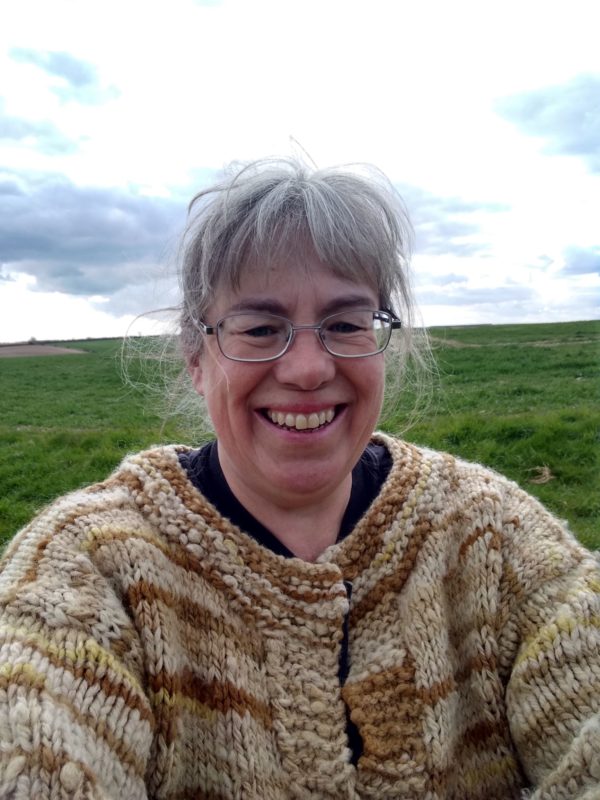About Dorset Wool

About Jo
My name is Jo and I run Dorset Wool. I have always loved sheep, starting at the tender age of 6 when I got my mother up at 5am to feed the orphan lambs before going to school. As I grew up, I helped during lambing time at a variety of farms. I went onto study Agricultural Science at Nottingham University, specialising in Environmental Science. This was followed by my PhD at Aberdeen University researching the control of wool growth in sheep.
My career diverted into teaching. I was fortunate to teach in a range of schools, including six months in a remote hill village school in Nepal, where I spent almost as much time working in the fields as in the classroom. I continued round the World and saw sheep farming in Australia and New Zealand. I returned to sheep, when I accepted an epidemiology post, specialising in Scrapie in sheep and BSE in cattle. A few years later, I returned to Dorset, where I first started teaching, to lecture in Animal Behaviour and Welfare at the local college. I left full time teaching behind in 2011 to focus on the wool business.
I now spend my days dyeing and spinning yarn. I specialise in using homegrown organic natural dyes. I am also involved in the Ancient Wessex Network. This is a group of re-enactors who focus on prehistoric life. This has lead to loads of research and I now use Woad, Weld and Madder to dye with. There was plenty of colour in pre-history…. I have also learnt more textile techniques which is great for the brain.
The Flock
In September 2010, I bought my first sheep. I chose Portlands, because they are small, local and rare. The flock started out with 2 ewe lambs, 4 ewes, a wether and a ram. It was an excellent flock, with typical Portland characteristics and a couple of ewes had really good fleeces.
Over the years I have selected rams carefully to improve the fleece quality, looking for finer fibre with plenty of crimp. My most recent lambs have wonderful fleeces (even if I say so myself), whilst maintaining the characteristics of the Portland, including ginger kemp fibres in the brisket.
Currently there are 17 sheep in the flock, including ewes and wethers, all selected for fleece quality.
Lambing
I lamb every few years, because it takes a couple of years for a Portland to produce its true fleece, plus I only have limited land available and lambing every year increases the size of the flock rapidly.
I spend time selecting my ram. My first 2 that I hired in had really good fleeces and produced some really lovely lambs. One produced a ram lamb from a fairly unrelated ewe with an outstanding fibre. This meant that I could use him for a couple of years and this improved my fibre very quickly. I now look further afield, going to sheep shows and talking to other Portland breeders to find a suitable ram.
Lambing happens outside in April. A range of tarpaulin covered pens appear to protect mothers and lambs for a day or so after birth. This also allows me to check on the ewe and ensure there is enough milk. The Portlands only have single lambs which means there are rarely problems with lambing and they tend to look after themselves.
Shearing
Shearing starts in early June, because I blade shear by hand the temperature has to be higher for the blades to slide than it does for electric shears. As the sheep have to be dry for shearing and I don’t have anywhere undercover to keep them, plus I cannot shear more than a couple a day, this can take a month to finish. The sheep really seem to enjoy being blade shorn though, as the shearing gives them a gentle massage and it is a really quiet and gentle process.
Sorting the fleeces
The fleeces are stored individually in paper bags prior to sorting. When sorting, the bag is emptied onto a clean area. The dirty fleece is removed and composted. The rest is then sorted according to quality, prior to a gentle warm water rinse and drying to remove any dust and dirt and some of the lanolin. After drying the fleeces are re-graded as it is hard to see the kemp in the dirty fleece sometimes.
Dyeing
Prior to combing or carding the best fibre or spun yarn is dyed using natural home-grown plant dyes.
The plants are grown in the garden. I now specialise in the ancient three dyes, Woad, Weld and Madder. These dye plants all grow well in the chalky soil and I supplement the yellows with Dyer’s Chamomile as it gives a softer yellow than the Weld,
.
